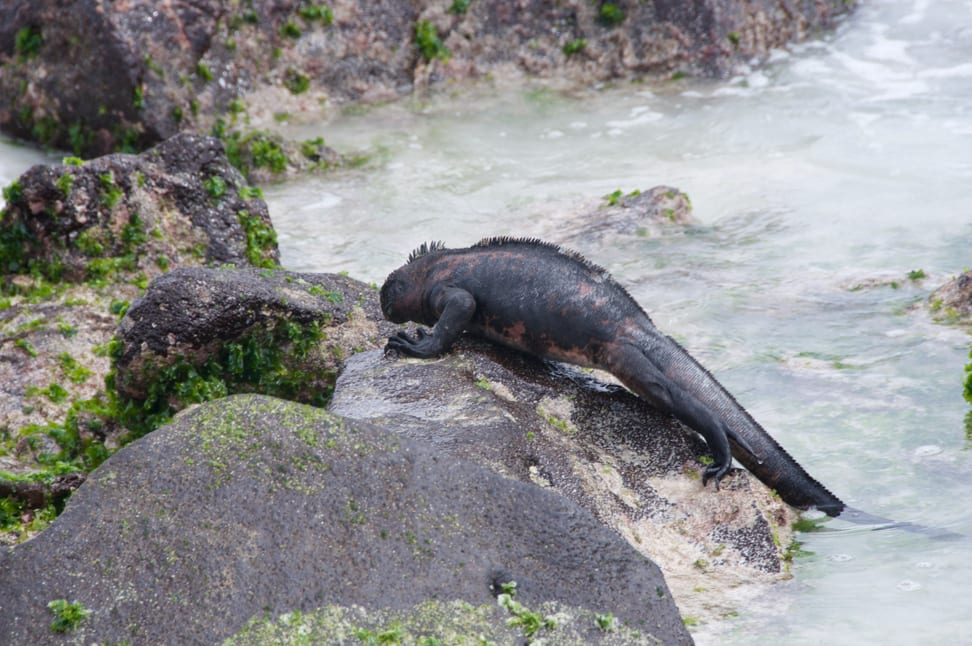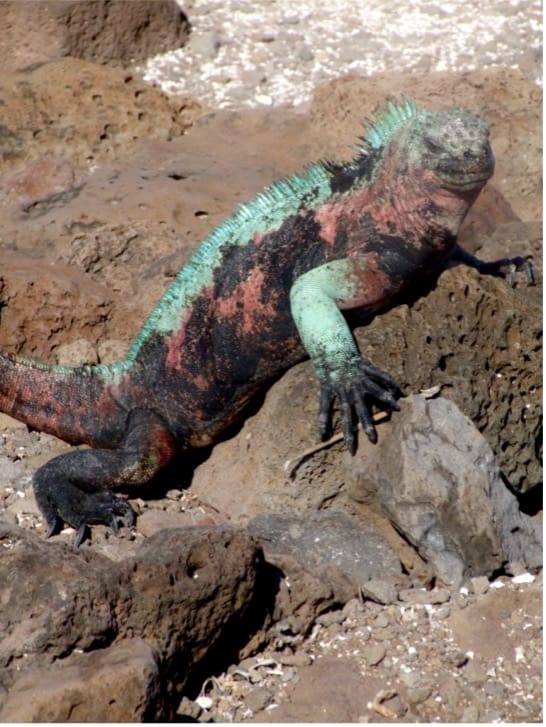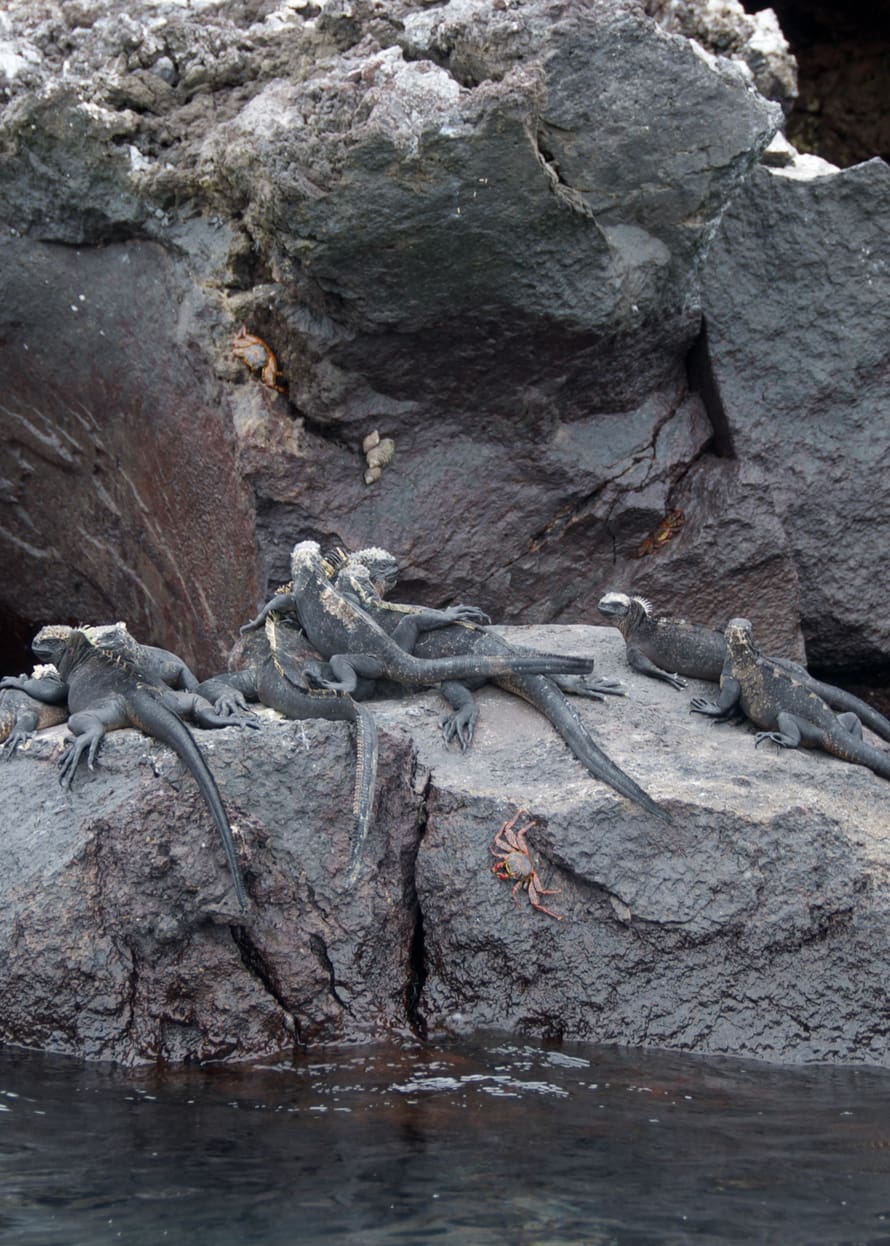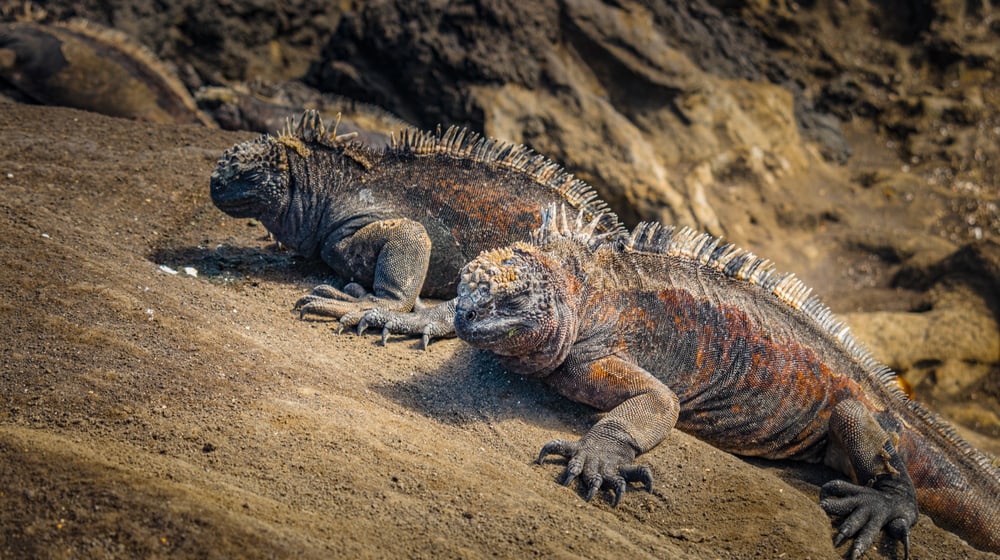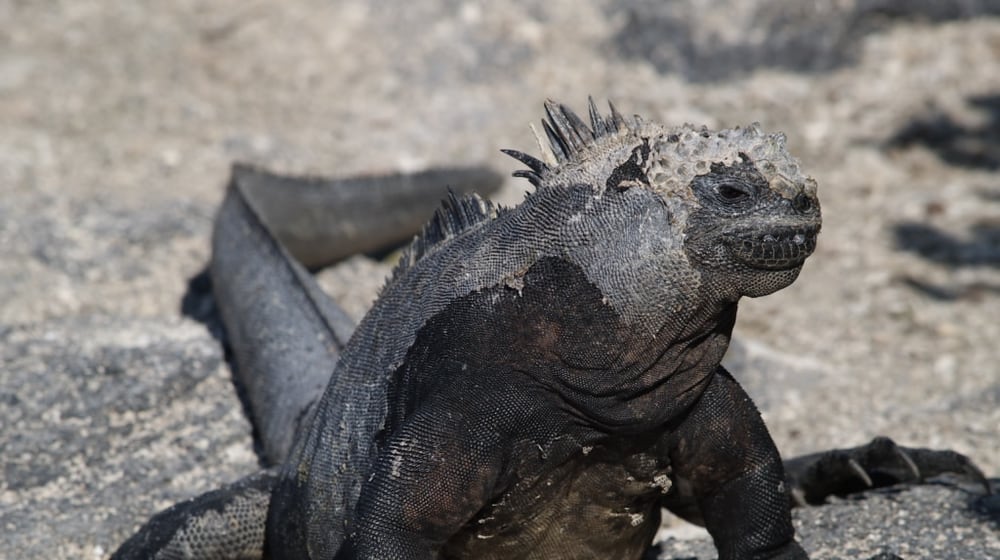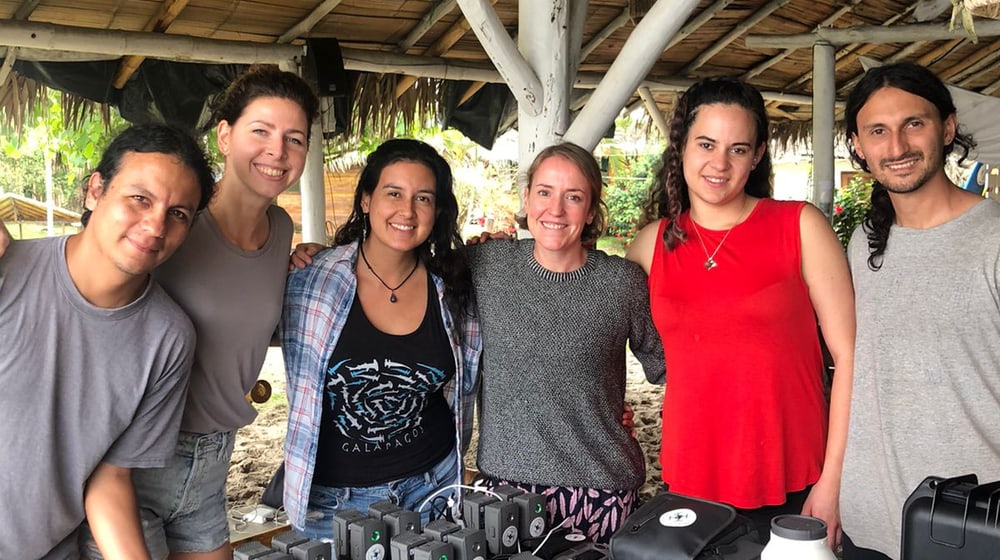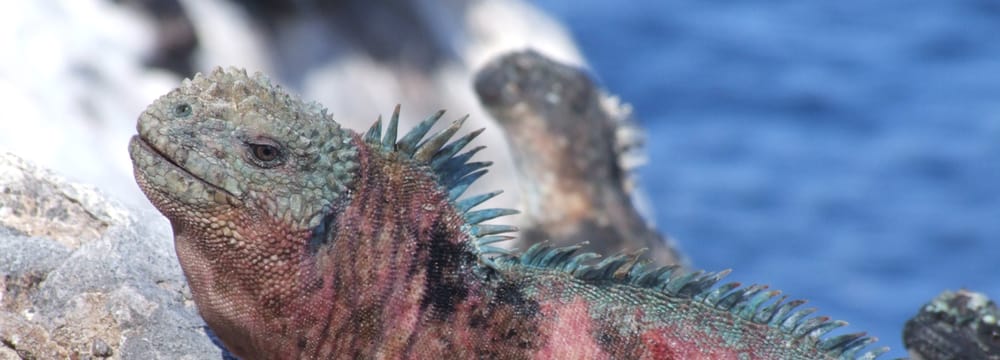
Complete census of marine iguanas on the Galápagos Islands
Marine iguanas look very primal and rather repulsive to many people. Even Charles Darwin called the lizards "hideous creatures" and "stupid and clumsy". But if you spend a little time with these animals, you can hardly escape their fascination.
The marine iguanas or sea lizards (Amblyrhynchus cristatus) are the only lizards in the world that search for food in the ocean; they feed on algae. These iguanas are only found on the Galápagos Islands, where they are endemic. Originally, it was assumed that the iguanas belonged to a single species, but Dr. Sebastian Steinfartz from the University of Leipzig succeeded in proving that there are 11 subspecies of the sea lizards. The animals differ according to the habitat where they live. They all have one thing in common, namely that the World Conservation Union (IUCN) classifies them as threatened with extinction.
Black yet colourful?
Male marine iguanas are generally larger than the females. Depending on the island they live on, marine iguanas vary in size. A male on the island of Genovesa is about 1 kg, while his conspecific on Isabela can reach 11 kg.
Their black colouring enables them to warm up more quickly in the sun. The reason for this is that these sea lizards, which are cold-blooded and dependent on the temperature of their environment, cool down considerably during their dives, which can last up to 45 minutes and during which they chew the algae off the rocks.
During the mating season (December/January), the males are brightly coloured. This colouration depends on the habitat of the animals and includes a wide variety of reds and greens. It is thought that this depends on the colour pigments of the algae that the animals in their particular habitat consume. The females, however, are not impressed by this colourful spectacle; they choose their mate according to size.
San Christóbal is one of the oldest islands in the archipelago. Sebastian Steinfartz and an international team from the University of Braunschweig made a very unexpected discovery here: within a distance of only a few kilometres, two marine iguana groups have evolved that do not mate with each other and are genetically so different that they are classified as two distinct subspecies.
Habitat challenges
Because marine iguanas live on the rocky coasts of the Galápagos archipelago, which are often very difficult to access, there is no comprehensive census of these unusual and unique animals. For their protection, however, it is important to obtain clarity about their population sizes. This is the only way to develop conservation projects that will ensure the continued existence of these seemingly primeval animals.
Dr Amy MacLeod and Prof. Sebastian Steinfartz from the University of Leipzig,have been studying the sea lizards for years. They have launched a very innovative and scientifically accurate project to count the animals. The marine iguana census will be done with the help of drones (UVAs), which are cheaper and less disruptive to the islands' hard-to-reach flora and fauna.
Help comes with modern technology
In collaboration with local UVA expert Dr, Rivas-Torres and staff from the Galápagos National Park (GNP), drones will fly from the ground or from boats over the coastlines of the Galápagos Islands to take photos and videos of the coastal landscape. There will be minimal disturbance to the iguanas or other wildlife living there. Another advantage is that this type of census is fast and inexpensive. In parallel to this new method, researchers will visit and count some colonies on different islands. The aim is to ensure that counting by drones provides as good or even better data than previous methods.
Another innovative approach is that the images will then be uploaded to a publicly accessible project on the globally available platform Zooniverse.org, where the counting can be done by interested private individuals -Citizen Science-. (As soon as the new data is available, we will provide the appropriate link on our homepage) People who are interested in conservation and science will thus have the opportunity to actively help/cooperate in a conservation project. It also gives them a feel for how time-consuming it can be to analyse data collected during expeditions.
In the past, this new form of counting has produced very quickly impressively accurate results and was also used in the pilot project carried out in January 2020 on the islands of Santa Fé and San Christóbal.
To ensure the accuracy of the counts carried out by the volunteers, they are compared with those carried out by specialists. The volunteer counts are therefore only used to estimate the population size if they have sufficient agreement with the specialist counts.
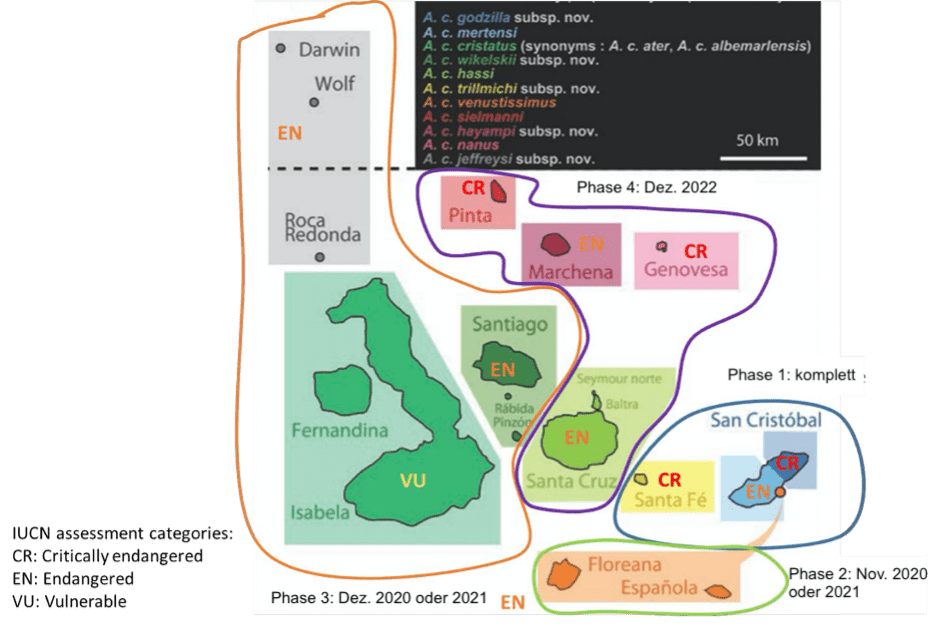
More sympathy for the Marine Iguanas
The aim of this ambitious project is to better understand the ecological needs of the marine iguanas. Simultaneously, it should also provide new insights into the effects of climate change on their food availability. Furthermore, not only the sea lizards but also other animal species or environmental pollution will be noted during the count. Based on the photos, a comprehensive collection of image-based (baseline) data on the Galápagos Islands will be compiled. This data will then form an archive documenting the current state of the islands and can be used for conservation projects of other coastal dwelling animals or environmental protection projects.
The team of Amy McLeod and Sebastian Steinfartz expects the use of drones to make it much easier to determine the population sizes of the marine lizards and thus to be able to create a conservation management plan in a timely manner.
This expedition will also enable the further development of new surveying techniques for wild species and improve public understanding of conservation issues from the Galápagos Islands.
Mitteldeutscher Rundfunk (MDR) has published a very nice reportage on this important project, which you can watch under the following link.
